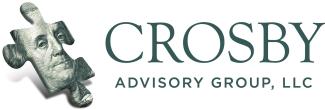
Four ways to build an emergency fund
Four ways to build an emergency fund
Let’s face it, life happens, but the more we can plan for the unexpected, the easier it will be to manage. Emergency funds should be a high-priority consideration when creating your financial strategy. An emergency fund is a reserve that is to be set aside if/when an unexpected issue or financial emergency should arise. Your emergency fund should be in an accessible account such as a checking account, savings account, and/or a money market fund so that the funds can be easily retrieved if needed. The ideal amount of money that should be in your emergency fund is between 3 to 6 months of your monthly expenses.
While it may seem like an obvious tactic, many Americans still do not have any emergency fund. In fact, according to statistical data researched and collected by a Bankrate survey in May 2023, 22% of American adults do not have any money in an emergency fund. The data which was taken from Gen Z, Millennials, Gen X, and Baby Boomers shows the following:
- 22%: No Emergency savings
- 30%: Less than 3 months of coverage
- 18%: 3-5 months of coverage
- 30%: 6 months or longer of coverage
Getting started can seem daunting but here are four (4) strategies you can get started with today:
- Create a separate account – set up an account where the money is not easily transferable to your main account but can still be accessed within a reasonable amount of time. This will reduce the temptation to tap into the money to fund something that is not an emergency.
- Automatic transfer payments - by starting a small monthly automatic payment, you will be able to help grow the fund slowly while not taking your budget to its breaking point.
- Only take money for genuine emergencies - these are things like unexpected vehicle maintenance, home repairs, and/or losing your job. Things you should not use your emergency fund are for things like take out, vacations, and/or regular monthly expenses.
- Replenish the money that you use - unfortunately, emergencies are rarely a one-and-done thing, so when you take money out of the account make sure to replenish it. This will ensure you are prepared for the next potential emergency.
Following these straightforward strategies will help you rest easy when it comes to unplanned emergencies. If you do not have an emergency fund or have less than the ideal range of coverage, we’re here to help! Contact us if you need help getting started or improving upon your existing emergency fund.
Disclaimer: Crosby Advisory Group, LLC provides financial planning, business growth strategies and Insurance protection. CAG is a registered investment advisor. Investing involves risk including the potential loss of principal. Consider all risks before investing.

